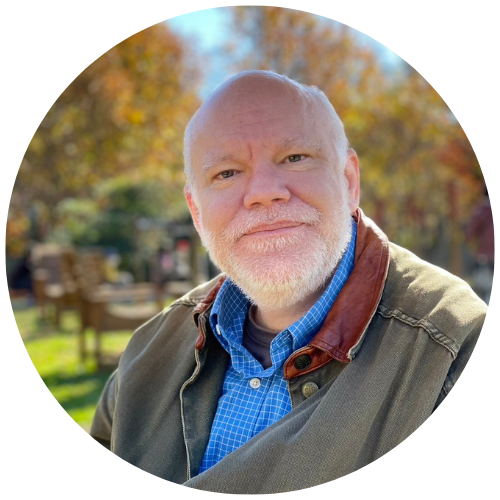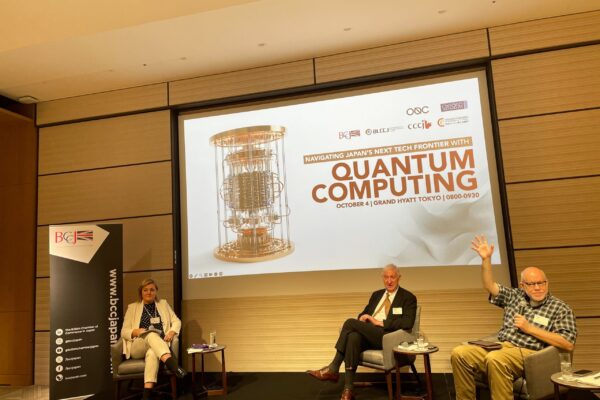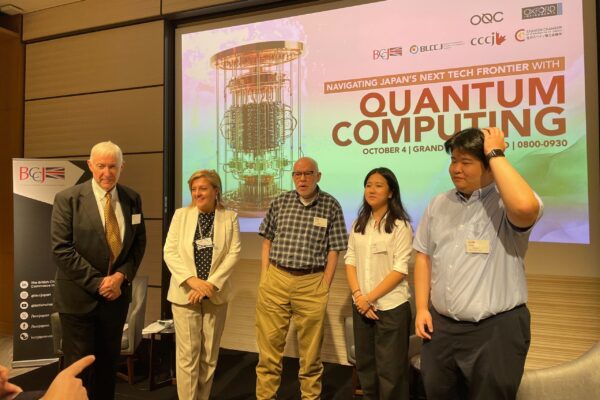BCCJ: Navigating Japan’s Next Tech Frontier with Quantum Computing
LOCATION
Tokyo, Japan
WHEN
Fri, 4 Oct: 08:00 – 09:30 JST

Todd Tilma
SENIOR QUANTUM ENGINEER
Todd is OQC’s Senior Quantum Engineer for our Japan Office. He is charged with maintaining the stability of OQC Toshiko. Before coming to work with us this past March, he was a house husband and enjoying life as a retired academic; being a former Associate Professor of Physics at Tokyo Institute of Technology. He earned his Ph.D. in Mathematical Physics in 2002 from The University of Texas at Austin and is the proud parent of two rescue cats.
SESSION DETAILS
BCCJ members and guests had the opportunity to dive into the groundbreaking technology that is quantum computing with experts from Oxford Instruments and Oxford Quantum Circuits Japan, Tony Ford and Dr. Todd Tilma, who broke down the basics and guided them through the latest developments in the field.
Key Highlights:
- Quantum computing (QC) is still in the NISQ era, but development is accelerating towards real-world use cases. Multiple modalities for processors are being developed, along with significant progress in error correction and logical abstraction layers.
- Japan is making notable progress in QC through government investment in core technology development, fostering supply chains and industry ecosystems (AIST G-QuAT), and hybrid use cases (NEDO/RIKEN). However, to strengthen its global position, Japan must enhance collaboration with foreign companies, attract talent, and increase investment in startups.
- QC will enable applications that are currently unimaginable, similar to how AI has transformed our lives over the past decade. Beyond known applications like simulation, optimisation, and QML, new use cases will emerge as the technology evolves.
- While there has been some hype around quantum computing over the past five years, it is important to stay engaged to capture its potential, as the full extent of QC’s impact is still unknown and will continue to unfold.
You can download Todd’s slides here.

